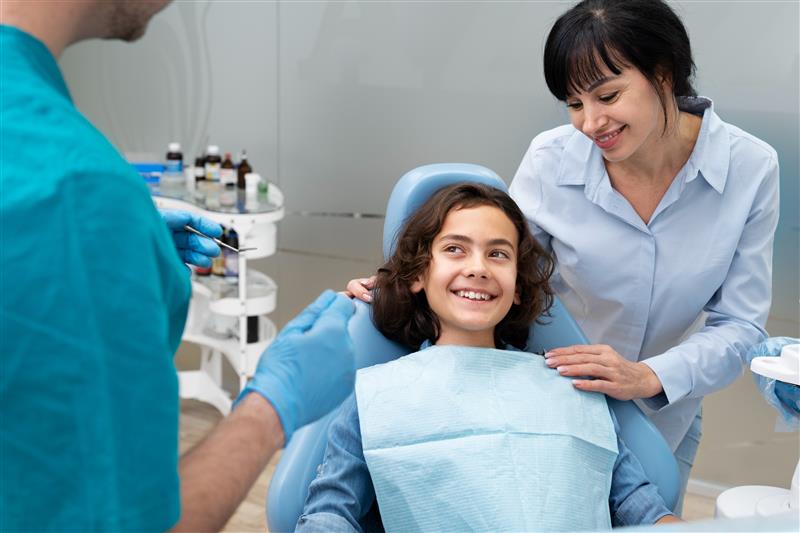Dental emergencies can happen anytime, whether a chipped tooth from a sports injury, a sudden toothache at night, or a lost filling right before an important event. Being prepared can make a critical difference in handling these situations calmly and effectively. A well-stocked dental emergency kit helps you address immediate needs and prevent further damage until professional care can be reached.
Having some essential supplies on hand can save precious time and alleviate discomfort while you seek emergency dentistry services for more serious cases. Being proactive ensures your family is better equipped to manage pain, protect teeth, and avoid complications before seeing a professional.
Families living in Central Florida can consult an experienced dentist in Lake Mary Florida, to learn about specific tools or products to include based on their household’s needs. This guidance can ensure your kit is tailored for every member, from children to adults, and ready for unexpected situations.
Essential Items to Include in Your Dental Emergency Kit
Your kit doesn’t need to be complicated or expensive. The goal is to include basic tools and supplies to provide temporary relief or protect damaged areas until professional care is available. Here are some essentials to include:
Sterile Gauze Pads and Cotton Balls: These are useful for controlling bleeding or protecting sensitive areas.
Dental Wax: Helps cover sharp edges from broken braces or chipped teeth.
Temporary Dental Cement or Filling Material: Provides a short-term fix for loose crowns or fillings.
Salt Packets: Creating a saline rinse to clean wounds or reduce swelling.
Cold Compress or Ice Pack: Helps manage pain and swelling from injuries.
Over-the-Counter Pain Relievers: Ibuprofen or acetaminophen can help alleviate discomfort.
Small Mirror and Flashlight: You can examine hard-to-see areas in the mouth.
Gloves and Tweezers: For hygienically handling small objects like a dislodged tooth or debris.
Consider adding a small container with a secure lid for preserving knocked-out teeth in milk or saline, which helps keep them viable for re-implantation.
Tailoring Your Kit for Different Family Members
Every family is unique, and so are their dental care needs. For households with young children, include items like flavored fluoride toothpaste, smaller gauze pads, and orthodontic wax for kids with braces. Sports-active teens may need a backup mouthguard or additional cold packs in case of injury.
Adults may require specific medications or dental products suited to their oral health needs, such as sensitivity toothpaste or interdental brushes. For elderly family members, denture repair kits or extra adhesive can be crucial. By tailoring your kit, you ensure that every member of your household is covered in the event of an emergency dental care.
Proper Storage and Accessibility of Your Kit
Once your kit is assembled, storing it correctly is essential. Choose a durable, waterproof container to protect supplies from moisture and contamination. A portable, clearly labeled box or pouch works well for quick access.
Keep the kit in an easy-to-reach location, such as a bathroom cabinet or a designated first-aid area. Ensure all family members, including older children, know where it is stored and how to use the basic items. For larger families, consider preparing a smaller, travel-sized version of the kit for cars, sports bags, or vacation luggage.
When and How to Use the Items in Your Kit
Knowing how to properly use your kit’s supplies is just as important as having them. For example, if someone knocks out a tooth, you should:
- Handle the tooth by the crown, not the root, to prevent damage to delicate tissue.
- Rinse it gently with water (without scrubbing) and try to reinsert it into the socket if possible.
- If reinsertion isn’t impossible, immediately place the tooth in milk or saline and head to a dentist.
For a chipped tooth, cover any jagged edges with dental wax or gauze to protect the mouth’s soft tissues. Use a cold compress to reduce swelling and pain, and avoid chewing on the affected side. Temporary dental cement can secure a loose crown or filling until you can see a professional.
In all cases, using the kit is a short-term solution; seeking professional dental care is crucial as soon as possible.
Maintaining and Updating Your Dental Emergency Kit
Your kit isn’t a one-and-done project. Like any first-aid resource, it requires periodic maintenance. Check your kit every few months to:
- Replace expired pain relievers or topical anesthetics.
- Restock items that have been used or damaged.
- Verify that temporary dental cement or wax is still usable.
- Update supplies based on changes in your family’s needs, such as braces, dentures, or newly diagnosed conditions.
Keeping the kit current ensures you’re always prepared for an emergency dental care.
Additional Tips for Handling Dental Emergencies
Even with a well-stocked kit, it’s essential to know some basic first-aid steps for common dental emergencies:
Toothache: Rinse the mouth with warm water and gently floss around the affected tooth to remove debris. Avoid applying aspirin directly to the gums, as this can irritate them.
Soft Tissue Injury: Use gauze to apply gentle pressure to stop bleeding and a cold compress to minimize swelling.
Broken Braces or Wires: Use dental wax to cover sharp edges and prevent injury to the cheeks or tongue.
Lost Filling or Crown: Protect the exposed tooth with temporary cement and avoid chewing on that side.
Being calm and informed during an emergency can prevent complications and reduce stress for your family. Practice discussing these scenarios so everyone knows what to do in a high-pressure situation.
Preparedness Is Peace of Mind
Preparing a kit for your family is an investment in health, comfort, and peace of mind. Emergencies often occur when least expected, and having the right tools on hand can make all the difference in managing pain and preventing further damage.
By assembling, storing, and maintaining your kit, you ensure your household can handle unexpected dental issues effectively. Combine your kit with knowledge of basic dental first aid and quick access to professional care, and you’ll be well-prepared for any emergency that comes your way. A little preparation today can protect your family’s smiles for years.




